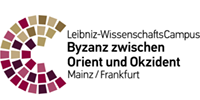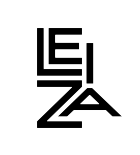Byzantium as an argument. Legitimizing Rule and War from rulership of Ivan Grozniy until Feodor Alekseevich (16th and 17th centuries)
At the beginning of the 16th century, three ways of harnessing history were developed in Russian booklore (kniznost’). It was not an invention, but an adaptation of long-known widespread methods. First approach was chronological, in which the Slavic tribes and Russia were placed in the wide narrative of the world history (Chronograph 1512). Genealogical method exploited a claim to a Roman origin of the Russian Grand Dukes (Skazanie o Knjazjach Vladimirskich). The latter path, based on the concept of translatio imperii, was prophetic-eschatological (the Third Rome cycle). Therefore, Russian biblignosts (knizniki) investigated a retrospective, in which previous eras served as a preparatory stage for the further apotheosis of Moscow. Evidently, the discourses were very heterogeneous and fragmented. Moreover, the exploitation of history was first and foremost peculiar to booklore. Nevertheless, these types of historical references for legitimation were sometimes used in the official political sphere.
Accordingly, the aim of this dissertation project is to analyze argumentation strategies and historical references to Byzantium primarily in the official discourse of the Tsardom of Russia in the long term over two centuries. Accordingly, the project mainly connects to the research training group’s thematic cluster that focuses on strategies of justification and legitimation. Mostly the temporal focus of the study will be on the time of Tsardom of Russia from rulership of Ivan Grozniy (1547-1584) until Feodor Alekseevich (1676-1682). Nonetheless, it is crucial to emphasize that the most of mythologems were developed under reign of Ivan III (1462-1505) and Vasilij III (1505-1533) and were adapted or modified in later times. Therefore, observation of the earlier sources is possible within the framework of this research. Since drawing chronological boundaries within centuries or reigns seems inappropriate for history of ideas. The situation is more complicated with the terminus ante quem since transformations in various social spheres may have occurred in heterogeneous ways. Hypothetically, the Church Split (Raskol. 1650-1660) is unlikely to have had an immediate effect on foreign policy discourse. On the other hand, argumentation strategies may have changed dramatically already during the Time of Troubles (Smuta, 1598-1613).
The focus of study primarily will be devoted to the ambassadorial sources (Posolskie knigi). The reason is that ambassadorial prescription (nakazy) and ceremonials filled with historical allusions and references embodied the official ideology in discourse, emblematic objects, and rituals. Moreover, the research will also actively consider narrative sources, especially official chronicles (letopisi) and chronographs, also the involvement of texts from the religious sphere seems required. The using of the source must rely on the well-developed approach of Russian source studies in understanding of genre specific, text history, and audience. In addition, it is necessary to clearly separate the spheresof religious and secular booklore from the sphere of the official texts. Nevertheless, a connection between them is possible, but needs to be keep carefully.
The project will address questions such as: were topoi based on attitudes toward a particular goal, or they were constant and entirely repetitive? Is it possible to trace the development of the details of certain topoi? Did the argumentation strategies and historical references differ in interactions with various Christian denomination or other religion? Was the change in formula related to the evolution of ideology or was it just a revision of one specific person? To answer these questions, it is necessary to present the topoi in dynamics – as a reaction to a changing situation. It should be mentioned that it is crucial to differentiate and classify all historical references. The reason is the existence of more than one possible semantic meanings of the historical reference. For example, a reference to the Third Rome may include only a city or an entire tsardom. Another important feature is coexistence of various concepts. For this reason,it seems impossible to generalize and examine it as a single ideology. Through the comparative analysis of these sources the dissertation project aims to demonstrate that various methods of harnessing history were using during the Tsardom of Russia. How much importance was or was not given to argumentation through Byzantine heritage in a broad sense.
Betreuung:












